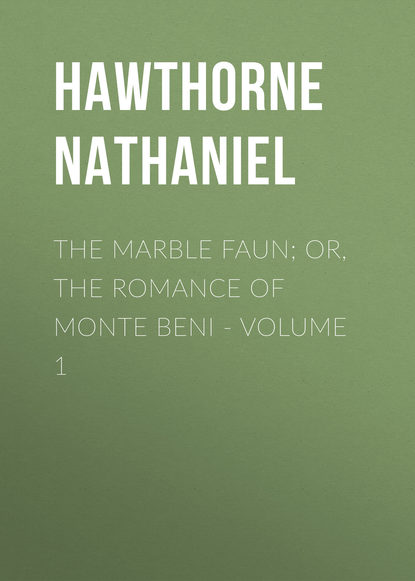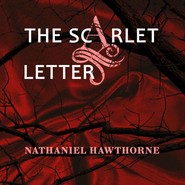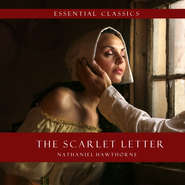По всем вопросам обращайтесь на: info@litportal.ru
(©) 2003-2024.
✖
The Marble Faun; Or, The Romance of Monte Beni - Volume 1
Настройки чтения
Размер шрифта
Высота строк
Поля
“I used to admire this statue exceedingly,” he remarked, “but, latterly, I find myself getting weary and annoyed that the man should be such a length of time leaning on his arm in the very act of death. If he is so terribly hurt, why does he not sink down and die without further ado? Flitting moments, imminent emergencies, imperceptible intervals between two breaths, ought not to be incrusted with the eternal repose of marble; in any sculptural subject, there should be a moral standstill, since there must of necessity be a physical one. Otherwise, it is like flinging a block of marble up into the air, and, by some trick of enchantment, causing it to stick there. You feel that it ought to come down, and are dissatisfied that it does not obey the natural law.”
“I see,” said Miriam mischievously, “you think that sculpture should be a sort of fossilizing process. But, in truth, your frozen art has nothing like the scope and freedom of Hilda’s and mine. In painting there is no similar objection to the representation of brief snatches of time, — perhaps because a story can be so much more fully told in picture, and buttressed about with circumstances that give it an epoch. For instance, a painter never would have sent down yonder Faun out of his far antiquity, lonely and desolate, with no companion to keep his simple heart warm.”
“Ah, the Faun!” cried Hilda, with a little gesture of impatience; “I have been looking at him too long; and now, instead of a beautiful statue, immortally young, I see only a corroded and discolored stone. This change is very apt to occur in statues.”
“And a similar one in pictures, surely,” retorted the sculptor. “It is the spectator’s mood that transfigures the Transfiguration itself. I defy any painter to move and elevate me without my own consent and assistance.”
“Then you are deficient of a sense,” said Miriam.
The party now strayed onward from hall to hall of that rich gallery, pausing here and there, to look at the multitude of noble and lovely shapes, which have been dug up out of the deep grave in which old Rome lies buried. And still, the realization of the antique Faun, in the person of Donatello, gave a more vivid character to all these marble ghosts. Why should not each statue grow warm with life! Antinous might lift his brow, and tell us why he is forever sad. The Lycian Apollo might strike his lyre; and, at the first vibration, that other Faun in red marble, who keeps up a motionless dance, should frisk gayly forth, leading yonder Satyrs, with shaggy goat-shanks, to clatter their little hoofs upon the floor, and all join hands with Donatello! Bacchus, too, a rosy flush diffusing itself over his time-stained surface, could come down from his pedestal, and offer a cluster of purple grapes to Donatello’s lips; because the god recognizes him as the woodland elf who so often shared his revels. And here, in this sarcophagus, the exquisitely carved figures might assume life, and chase one another round its verge with that wild merriment which is so strangely represented on those old burial coffers: though still with some subtile allusion to death, carefully veiled, but forever peeping forth amid emblems of mirth and riot.
As the four friends descended the stairs, however, their play of fancy subsided into a much more sombre mood; a result apt to follow upon such exhilaration as that which had so recently taken possession of them.
“Do you know,” said Miriam confidentially to Hilda, “I doubt the reality of this likeness of Donatello to the Faun, which we have been talking so much about? To say the truth, it never struck me so forcibly as it did Kenyon and yourself, though I gave in to whatever you were pleased to fancy, for the sake of a moment’s mirth and wonder.” “I was certainly in earnest, and you seemed equally so,” replied Hilda, glancing back at Donatello, as if to reassure herself of the resemblance. “But faces change so much, from hour to hour, that the same set of features has often no keeping with itself; to an eye, at least, which looks at expression more than outline. How sad and sombre he has grown all of a sudden!” “Angry too, methinks! nay, it is anger much more than sadness,” said Miriam. “I have seen Donatello in this mood once or twice before. If you consider him well, you will observe an odd mixture of the bulldog, or some other equally fierce brute, in our friend’s composition; a trait of savageness hardly to be expected in such a gentle creature as he usually is. Donatello is a very strange young man. I wish he would not haunt my footsteps so continually.”
“You have bewitched the poor lad,” said the sculptor, laughing. “You have a faculty of bewitching people, and it is providing you with a singular train of followers. I see another of them behind yonder pillar; and it is his presence that has aroused Donatello’s wrath.”
They had now emerged from the gateway of the palace; and partly concealed by one of the pillars of the portico stood a figure such as may often be encountered in the streets and piazzas of Rome, and nowhere else. He looked as if he might just have stepped out of a picture, and, in truth, was likely enough to find his way into a dozen pictures; being no other than one of those living models, dark, bushy bearded, wild of aspect and attire, whom artists convert into saints or assassins, according as their pictorial purposes demand.
“Miriam,” whispered Hilda, a little startled, “it is your model!”
CHAPTER III
SUBTERRANEAN REMINISCENCES
Miriam’s model has so important a connection with our story, that it is essential to describe the singular mode of his first appearance, and how he subsequently became a self-appointed follower of the young female artist. In the first place, however, we must devote a page or two to certain peculiarities in the position of Miriam herself.
There was an ambiguity about this young lady, which, though it did not necessarily imply anything wrong, would have operated unfavorably as regarded her reception in society, anywhere but in Rome. The truth was, that nobody knew anything about Miriam, either for good or evil. She had made her appearance without introduction, had taken a studio, put her card upon the door, and showed very considerable talent as a painter in oils. Her fellow professors of the brush, it is true, showered abundant criticisms upon her pictures, allowing them to be well enough for the idle half-efforts of an amateur, but lacking both the trained skill and the practice that distinguish the works of a true artist.
Nevertheless, be their faults what they might, Miriam’s pictures met with good acceptance among the patrons of modern art. Whatever technical merit they lacked, its absence was more than supplied by a warmth and passionateness, which she had the faculty of putting into her productions, and which all the world could feel. Her nature had a great deal of color, and, in accordance with it, so likewise had her pictures.
Miriam had great apparent freedom of intercourse; her manners were so far from evincing shyness, that it seemed easy to become acquainted with her, and not difficult to develop a casual acquaintance into intimacy. Such, at least, was the impression which she made, upon brief contact, but not such the ultimate conclusion of those who really sought to know her. So airy, free, and affable was Miriam’s deportment towards all who came within her sphere, that possibly they might never be conscious of the fact, but so it was, that they did not get on, and were seldom any further advanced into her good graces to-day than yesterday. By some subtile quality, she kept people at a distance, without so much as letting them know that they were excluded from her inner circle. She resembled one of those images of light, which conjurers evoke and cause to shine before us, in apparent tangibility, only an arm’s length beyond our grasp: we make a step in advance, expecting to seize the illusion, but find it still precisely so far out of our reach. Finally, society began to recognize the impossibility of getting nearer to Miriam, and gruffly acquiesced.
There were two persons, however, whom she appeared to acknowledge as friends in the closer and truer sense of the word; and both of these more favored individuals did credit to Miriam’s selection. One was a young American sculptor, of high promise and rapidly increasing celebrity; the other, a girl of the same country, a painter like Miriam herself, but in a widely different sphere of art. Her heart flowed out towards these two; she requited herself by their society and friendship (and especially by Hilda’s) for all the loneliness with which, as regarded the rest of the world, she chose to be surrounded. Her two friends were conscious of the strong, yearning grasp which Miriam laid upon them, and gave her their affection in full measure; Hilda, indeed, responding with the fervency of a girl’s first friendship, and Kenyon with a manly regard, in which there was nothing akin to what is distinctively called love.
A sort of intimacy subsequently grew up between these three friends and a fourth individual; it was a young Italian, who, casually visiting Rome, had been attracted by the beauty which Miriam possessed in a remarkable degree. He had sought her, followed her, and insisted, with simple perseverance, upon being admitted at least to her acquaintance; a boon which had been granted, when a more artful character, seeking it by a more subtle mode of pursuit, would probably have failed to obtain it. This young man, though anything but intellectually brilliant, had many agreeable characteristics which won him the kindly and half-contemptuous regard of Miriam and her two friends. It was he whom they called Donatello, and whose wonderful resemblance to the Faun of Praxiteles forms the keynote of our narrative.
Such was the position in which we find Miriam some few months after her establishment at Rome. It must be added, however, that the world did not permit her to hide her antecedents without making her the subject of a good deal of conjecture; as was natural enough, considering the abundance of her personal charms, and the degree of notice that she attracted as an artist. There were many stories about Miriam’s origin and previous life, some of which had a very probable air, while others were evidently wild and romantic fables. We cite a few, leaving the reader to designate them either under the probable or the romantic head.
It was said, for example, that Miriam was the daughter and heiress of a great Jewish banker (an idea perhaps suggested by a certain rich Oriental character in her face), and had fled from her paternal home to escape a union with a cousin, the heir of another of that golden brotherhood; the object being to retain their vast accumulation of wealth within the family. Another story hinted that she was a German princess, whom, for reasons of state, it was proposed to give in marriage either to a decrepit sovereign, or a prince still in his cradle. According to a third statement, she was the off-spring of a Southern American planter, who had given her an elaborate education and endowed her with his wealth; but the one burning drop of African blood in her veins so affected her with a sense of ignominy, that she relinquished all and fled her country. By still another account she was the lady of an English nobleman; and, out of mere love and honor of art, had thrown aside the splendor of her rank, and come to seek a subsistence by her pencil in a Roman studio.
In all the above cases, the fable seemed to be instigated by the large and bounteous impression which Miriam invariably made, as if necessity and she could have nothing to do with one another. Whatever deprivations she underwent must needs be voluntary. But there were other surmises, taking such a commonplace view as that Miriam was the daughter of a merchant or financier, who had been ruined in a great commercial crisis; and, possessing a taste for art, she had attempted to support herself by the pencil, in preference to the alternative of going out as governess.
Be these things how they might, Miriam, fair as she looked, was plucked up out of a mystery, and had its roots still clinging to her. She was a beautiful and attractive woman, but based, as it were, upon a cloud, and all surrounded with misty substance; so that the result was to render her sprite-like in her most ordinary manifestations. This was the case even in respect to Kenyon and Hilda, her especial friends. But such was the effect of Miriam’s natural language, her generosity, kindliness, and native truth of character, that these two received her as a dear friend into their hearts, taking her good qualities as evident and genuine, and never imagining that what was hidden must be therefore evil.
We now proceed with our narrative.
The same party of friends, whom we have seen at the sculpture-gallery of the Capitol, chanced to have gone together, some months before, to the catacomb of St. Calixtus. They went joyously down into that vast tomb, and wandered by torchlight through a sort of dream, in which reminiscences of church aisles and grimy cellars — and chiefly the latter — seemed to be broken into fragments, and hopelessly intermingled. The intricate passages along which they followed their guide had been hewn, in some forgotten age, out of a dark-red, crumbly stone. On either side were horizontal niches, where, if they held their torches closely, the shape of a human body was discernible in white ashes, into which the entire mortality of a man or woman had resolved itself. Among all this extinct dust, there might perchance be a thigh-bone, which crumbled at a touch; or possibly a skull, grinning at its own wretched plight, as is the ugly and empty habit of the thing.
Sometimes their gloomy pathway tended upward, so that, through a crevice, a little daylight glimmered down upon them, or even a streak of sunshine peeped into a burial niche; then again, they went downward by gradual descent, or by abrupt, rudely hewn steps, into deeper and deeper recesses of the earth. Here and there the narrow and tortuous passages widened somewhat, developing themselves into small chapels; — which once, no doubt, had been adorned with marble-work and lighted with ever-burning lamps and tapers. All such illumination and ornament, however, had long since been extinguished and stript away; except, indeed, that the low roofs of a few of these ancient sites of worship were covered with dingy stucco, and frescoed with scriptural scenes and subjects, in the dreariest stage of ruin.
In one such chapel, the guide showed them a low arch, beneath which the body of St. Cecilia had been buried after her martyrdom, and where it lay till a sculptor saw it, and rendered it forever beautiful in marble.
In a similar spot they found two sarcophagi, one containing a skeleton, and the other a shrivelled body, which still wore the garments of its former lifetime.
“How dismal all this is!” said Hilda, shuddering. “I do not know why we came here, nor why we should stay a moment longer.”
“I hate it all!” cried Donatello with peculiar energy. “Dear friends, let us hasten back into the blessed daylight!”
From the first, Donatello had shown little fancy for the expedition; for, like most Italians, and in especial accordance with the law of his own simple and physically happy nature, this young man had an infinite repugnance to graves and skulls, and to all that ghastliness which the Gothic mind loves to associate with the idea of death. He shuddered, and looked fearfully round, drawing nearer to Miriam, whose attractive influence alone had enticed him into that gloomy region.
“What a child you are, poor Donatello!” she observed, with the freedom which she always used towards him. “You are afraid of ghosts!”
“Yes, signorina; terribly afraid!” said the truthful Donatello.
“I also believe in ghosts,” answered Miriam, “and could tremble at them, in a suitable place. But these sepulchres are so old, and these skulls and white ashes so very dry, that methinks they have ceased to be haunted. The most awful idea connected with the catacombs is their interminable extent, and the possibility of going astray into this labyrinth of darkness, which broods around the little glimmer of our tapers.”
“Has any one ever been lost here?” asked Kenyon of the guide.
“Surely, signor; one, no longer ago than my father’s time,” said the guide; and he added, with the air of a man who believed what he was telling, “but the first that went astray here was a pagan of old Rome, who hid himself in order to spy out and betray the blessed saints, who then dwelt and worshipped in these dismal places. You have heard the story, signor? A miracle was wrought upon the accursed one; and, ever since (for fifteen centuries at least), he has been groping in the darkness, seeking his way out of the catacomb.”
“Has he ever been seen?” asked Hilda, who had great and tremulous faith in marvels of this kind.
“These eyes of mine never beheld him, signorina; the saints forbid!” answered the guide. “But it is well known that he watches near parties that come into the catacomb, especially if they be heretics, hoping to lead some straggler astray. What this lost wretch pines for, almost as much as for the blessed sunshine, is a companion to be miserable with him.”
“Such an intense desire for sympathy indicates something amiable in the poor fellow, at all events,” observed Kenyon.
They had now reached a larger chapel than those heretofore seen; it was of a circular shape, and, though hewn out of the solid mass of red sandstone, had pillars, and a carved roof, and other tokens of a regular architectural design. Nevertheless, considered as a church, it was exceedingly minute, being scarcely twice a man’s stature in height, and only two or three paces from wall to wall; and while their collected torches illuminated this one small, consecrated spot, the great darkness spread all round it, like that immenser mystery which envelops our little life, and into which friends vanish from us, one by one. “Why, where is Miriam?” cried Hilda. The party gazed hurriedly from face to face, and became aware that one of their party had vanished into the great darkness, even while they were shuddering at the remote possibility of such a misfortune.
CHAPTER IV
THE SPECTRE OF THE CATACOMB
“Surely, she cannot be lost!” exclaimed Kenyon. “It is but a moment since she was speaking.”
“No, no!” said Hilda, in great alarm. “She was behind us all; and it is a long while since we have heard her voice!”
“Torches! torches!” cried Donatello desperately. “I will seek her, be the darkness ever so dismal!”
But the guide held him back, and assured them all that there was no possibility of assisting their lost companion, unless by shouting at the very top of their voices. As the sound would go very far along these close and narrow passages, there was a fair probability that Miriam might hear the call, and be able to retrace her steps.
Accordingly, they all — Kenyon with his bass voice; Donatello with his tenor; the guide with that high and hard Italian cry, which makes the streets of Rome so resonant; and Hilda with her slender scream, piercing farther than the united uproar of the rest — began to shriek, halloo, and bellow, with the utmost force of their lungs. And, not to prolong the reader’s suspense (for we do not particularly seek to interest him in this scene, telling it only on account of the trouble and strange entanglement which followed), they soon heard a responsive call, in a female voice.
“It was the signorina!” cried Donatello joyfully.
“Yes; it was certainly dear Miriam’s voice,” said Hilda. “And here she comes! Thank Heaven! Thank Heaven!”
The figure of their friend was now discernible by her own torchlight, approaching out of one of the cavernous passages. Miriam came forward, but not with the eagerness and tremulous joy of a fearful girl, just rescued from a labyrinth of gloomy mystery. She made no immediate response to their inquiries and tumultuous congratulations; and, as they afterwards remembered, there was something absorbed, thoughtful, and self-concentrated in her deportment. She looked pale, as well she might, and held her torch with a nervous grasp, the tremor of which was seen in the irregular twinkling of the flame. This last was the chief perceptible sign of any recent agitation or alarm.

















